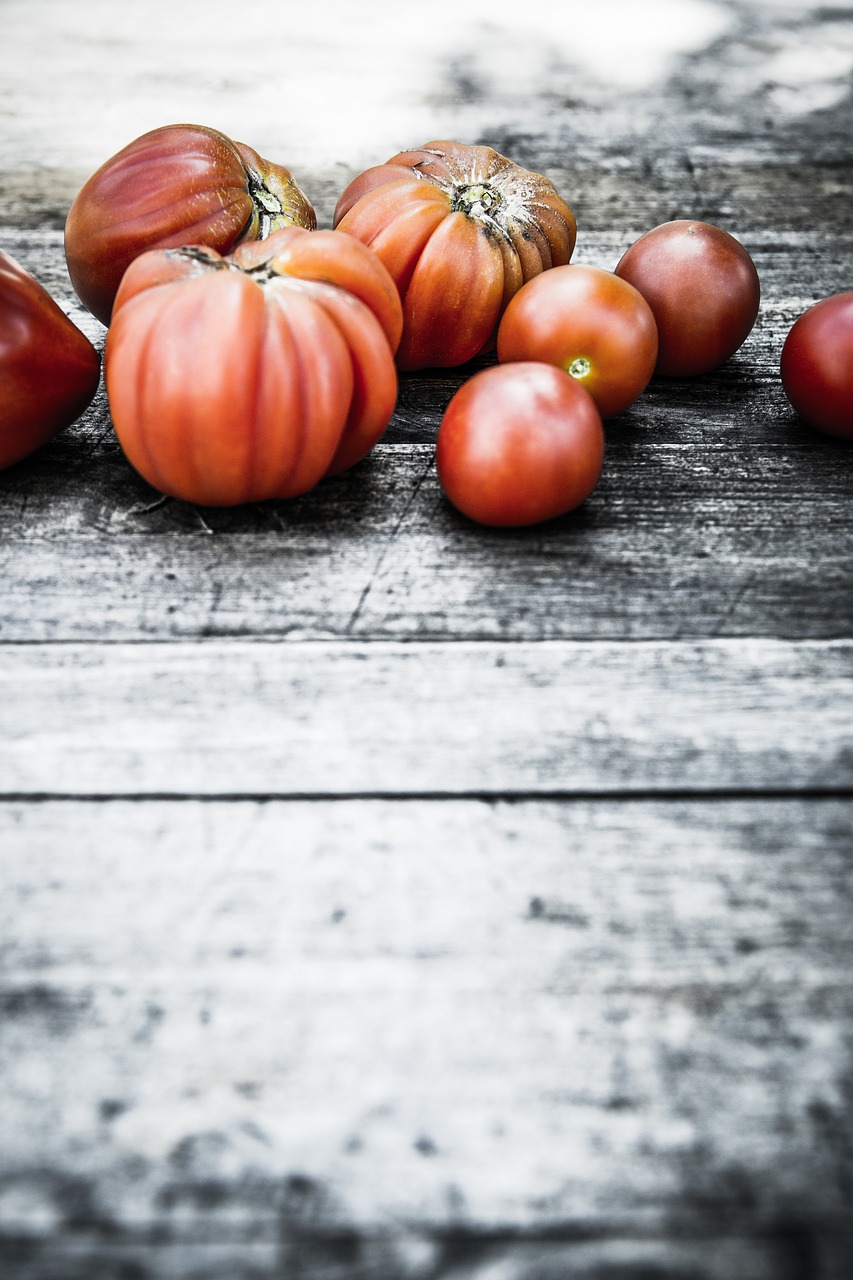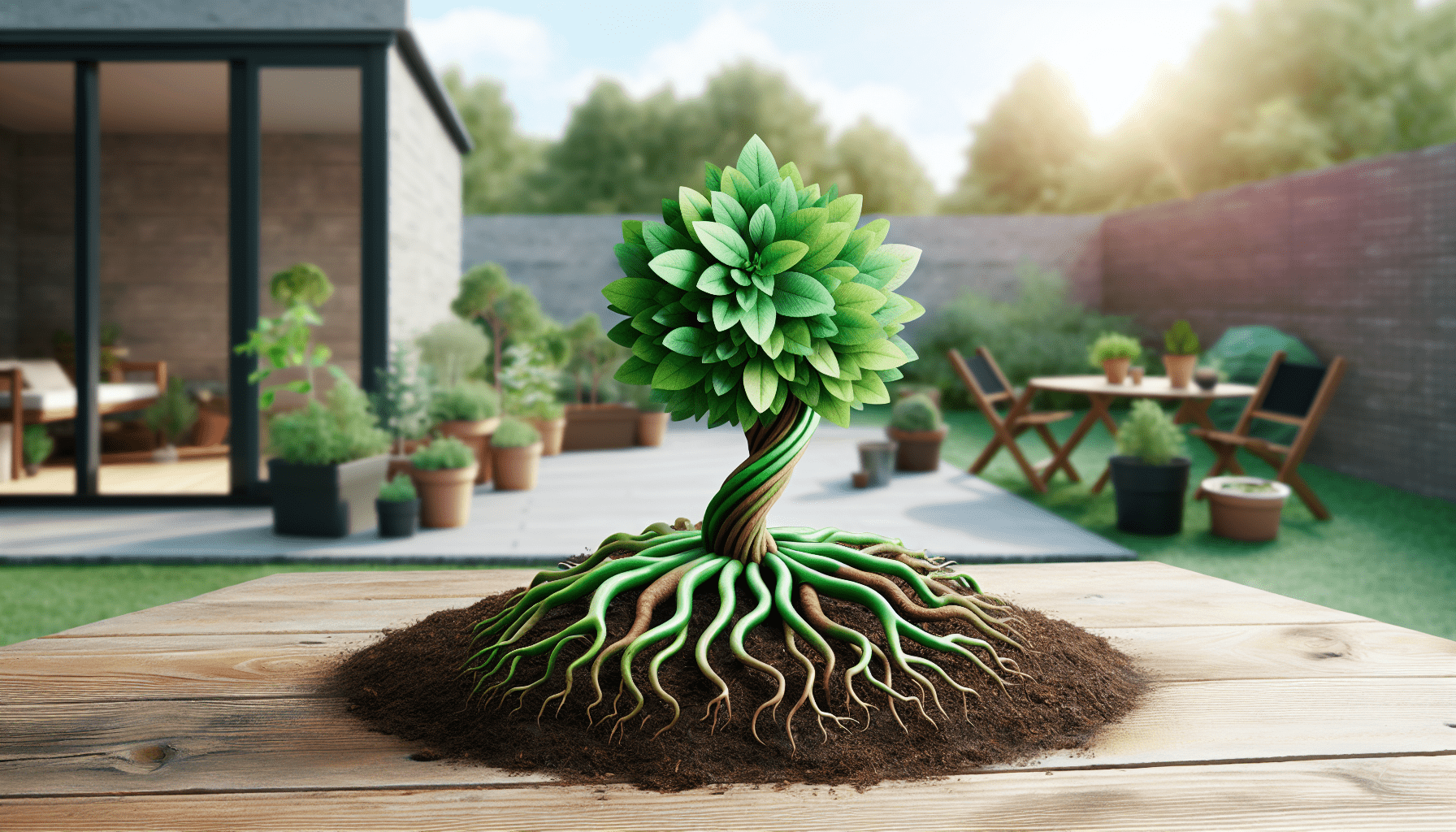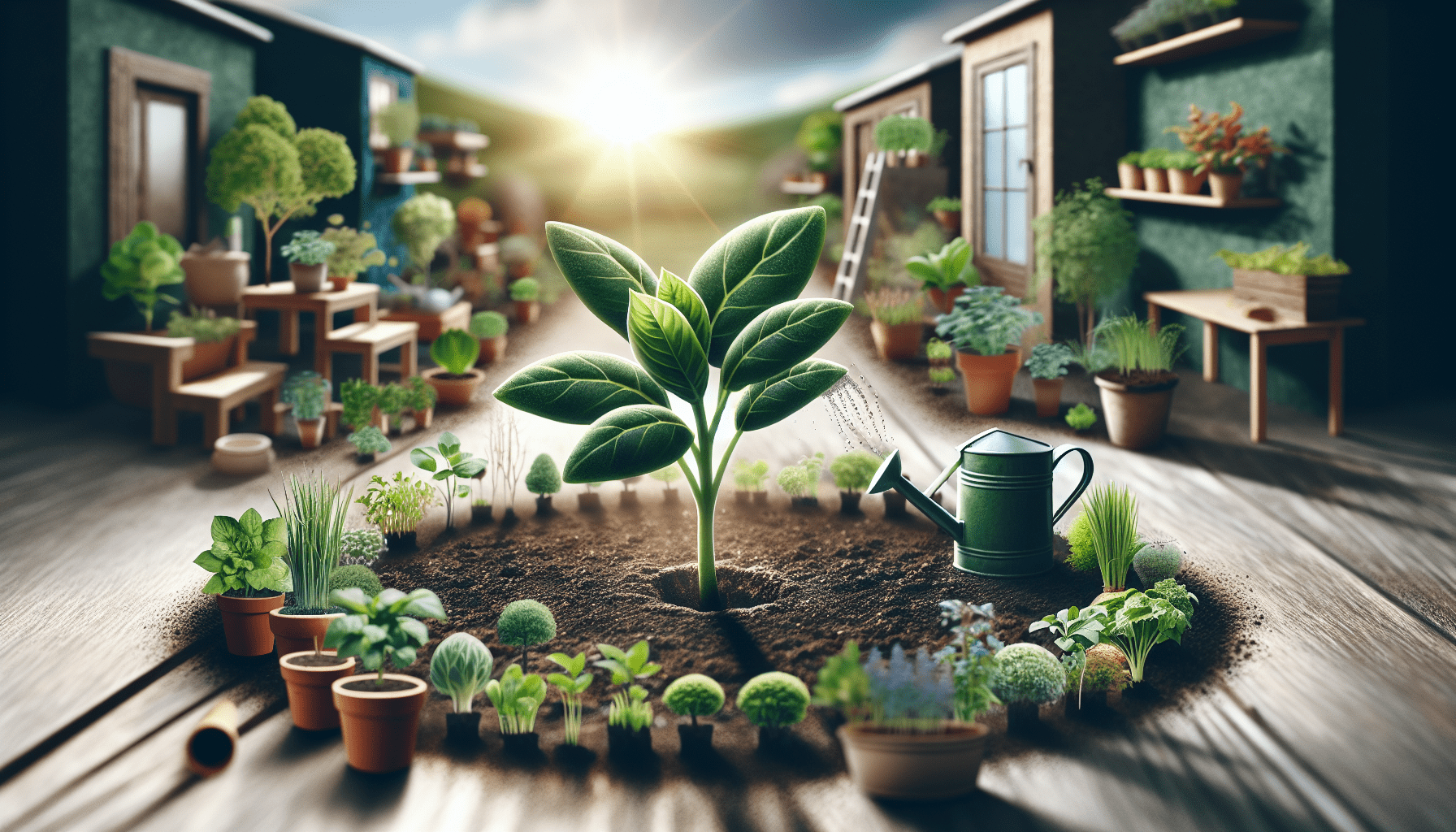Imagine being able to grow your own food and sustain yourself in any situation. With a survival garden, you can have the power to do just that. In this article, we will explore the best ways to create a survival garden, providing you with the knowledge and tips you need to start cultivating your own source of fresh, nutritious produce. Whether you are a seasoned gardener or a beginner, this guide will walk you through the essential steps and techniques to ensure the success of your survival garden. From choosing the right location to selecting the best crops, get ready to discover the secrets to becoming self-sufficient and prepared for any situation. Let’s embark on this journey towards creating your very own survival garden.

Choose the Right Location
When planning your survival garden, one of the first considerations you need to make is choosing the right location. This decision will greatly impact the success of your garden and the quality of the crops you grow. There are a few key factors to keep in mind when selecting a location.
Consider the Climate
The climate plays a crucial role in determining what vegetables can thrive in your garden. Take into account the average temperatures, rainfall patterns, and overall weather conditions of your region. Some vegetables prefer cooler temperatures, while others thrive in warmer climates. By understanding your local climate, you can choose vegetables that are well-suited to your area and ensure they have the best chance of survival.
Assess the Sunlight
Sunlight is essential for the growth and development of plants. Most vegetables require a minimum of 6-8 hours of direct sunlight per day to thrive. Take note of the areas in your yard that receive the most sunlight and choose a location that offers ample sunlight exposure. Avoid planting your survival garden in shady areas or where it may be obstructed by buildings or trees.
Check the Soil Quality
The quality of your soil is another crucial factor to consider. Conduct a soil test to determine its pH level and nutrient composition. Most vegetables prefer slightly acidic to neutral soil with adequate organic matter. If your soil lacks essential nutrients or has a pH imbalance, you may need to amend it with organic fertilizers or compost. Additionally, ensure the soil has good drainage to prevent waterlogged roots and disease.
Plan Your Garden Layout
Once you have chosen the right location for your survival garden, it’s time to plan the layout. Careful planning will maximize the use of your available space and create an efficient, productive garden.
Determine the Size
Consider how much space you have available for your survival garden. If you have a small backyard, you may need to focus on container gardening or vertical gardening techniques. However, if you have a larger plot of land, you can dedicate more space to traditional in-ground planting beds. Consider the number of vegetables you want to grow and ensure you have enough room for each plant to thrive.
Divide the Space
Dividing your garden space can help optimize the layout and facilitate easier management. Consider creating separate beds or sections for different types of vegetables. This allows you to group plants with similar watering, sunlight, or soil requirements together. Dividing your garden also helps with crop rotation, as you can rotate the types of vegetables grown in each section each year, reducing the risk of soil-borne diseases.
Consider Companion Planting
Companion planting is a gardening technique that involves planting mutually beneficial plants together. Some plants have natural synergies, where one plant helps repel pests for another or enhances the flavor and growth of neighboring plants. For example, planting marigolds alongside tomatoes can help deter pests like nematodes. Research companion planting combinations to maximize the productivity and resilience of your survival garden.
Select the Right Vegetables
Choosing the right vegetables is crucial for a successful survival garden. Focus on high-yield crops that offer a substantial harvest and prioritize nutrient-dense varieties that provide essential vitamins and minerals for your diet. Consider vegetables with a long shelf life to ensure you have a sustainable supply of food.
Focus on High-Yield Crops
In a survival garden, it’s essential to prioritize vegetables that offer high yields. Some examples of high-yield crops include tomatoes, peppers, zucchini, beans, and leafy greens like spinach and kale. These vegetables are known for their productivity and can provide an abundant harvest to sustain you and your family.
Choose Nutrient-Dense Varieties
When faced with survival situations, it’s important to consume nutrient-dense foods to maintain your health and well-being. Select vegetables that are rich in essential vitamins and minerals, such as dark green leafy vegetables, carrots, sweet potatoes, and broccoli. These vegetables will not only provide sustenance but also contribute to your overall nutritional needs.
Consider Long Shelf Life
In emergency situations, having access to vegetables with a long shelf life is crucial. Some vegetables, like winter squash, pumpkins, onions, and potatoes, can be stored for months if stored properly. These vegetables can serve as a valuable food source during periods when fresh produce is scarce. Plan your survival garden to include a variety of vegetables with different harvesting and storage times to ensure a continuous food supply.
Prepare the Soil
Properly preparing the soil is essential for optimal plant growth and productivity. Before planting your survival garden, take the necessary steps to improve the soil quality.
Remove Weeds and Grass
Start by clearing the area of any weeds or grass. Weeds compete for nutrients and sunlight, which can hinder the growth of your vegetables. Remove them manually or use a garden tool to ensure the area is free from unwanted plants. This will create a clean slate for your survival garden and prevent the accumulation of pests and diseases.
Improve Soil Drainage
Good soil drainage is crucial to prevent waterlogged roots and the development of root diseases. If your soil has poor drainage, consider incorporating organic matter, such as compost or well-rotted manure, to help improve its structure. This will enhance water infiltration and reduce the risk of water stagnation.
Add Organic Matter
Boost the fertility of your soil by adding organic matter. Organic matter improves soil structure, promotes nutrient retention, and encourages beneficial microbial activity. Incorporate compost, leaf mulch, or well-rotted manure into your soil to enrich it with essential nutrients. This will provide a solid foundation for your plants and help them thrive.

Start from Seeds or Seedlings
Deciding whether to start your survival garden from seeds or seedlings is a key consideration. Each method has its advantages, and your choice will depend on factors such as time, space, and preference.
Select High-Quality Seeds
If you choose to start from seeds, ensure that you select high-quality seeds from reputable sources. Look for seeds that are specific to your region and climate to maximize their chances of germination and success. Pay attention to the expiration dates on seed packets and store them properly to maintain their viability.
Properly Store Seeds
Seeds are the lifeline of your survival garden, so it’s important to store them properly. Keep your seeds in a cool, dry place to maintain their viability. Consider using airtight containers or sealable bags to protect them from moisture and pests. Label your seeds with the date and variety to keep track of their shelf life and ensure you are using the oldest seeds first.
Consider Using Seedlings
Using seedlings can be advantageous if you have limited time, want to jumpstart your garden, or face challenges germinating seeds. Seedlings are pre-grown plants that are typically sold in small pots or trays. By purchasing seedlings, you can skip the initial stage of seed germination and have plants that are ready for transplanting into your survival garden. Just ensure that the seedlings are healthy, disease-free, and well-suited to your local climate.
Implement Watering Techniques
Proper watering is crucial for the health and survival of your plants. Implementing effective watering techniques will help ensure your survival garden receives adequate moisture without wasting water.
Install a Drip Irrigation System
Consider installing a drip irrigation system in your survival garden. Drip irrigation delivers water directly to the roots of plants, minimizing water waste through evaporation or runoff. It also allows for more precise watering, ensuring each plant receives the necessary moisture. Drip irrigation systems can be set on timers, making it easier to maintain a consistent watering schedule.
Mulch to Retain Moisture
Mulching is an effective technique to retain moisture in the soil and minimize water evaporation. Apply a layer of organic mulch, such as straw, wood chips, or leaves, around your plants. This will create a protective barrier that helps reduce soil temperature, suppress weed growth, and retain moisture. Mulching is particularly beneficial in dry climates or during periods of drought, as it helps conserve water.
Watering Schedule and Practices
Establish a watering schedule based on the specific needs of your plants. Some vegetables require more frequent watering, while others are more drought-tolerant. Water your survival garden early in the morning or in the evening when temperatures are cooler to reduce evaporation. Avoid overhead watering, as it can promote the spread of fungal diseases. Instead, focus on delivering water directly to the base of the plants.

Establish Pest and Disease Control
Pests and diseases can pose a significant threat to your survival garden. Implementing pest and disease control measures is essential to protect your vegetables and ensure a bountiful harvest.
Use Natural Pest Repellents
Utilize natural pest repellents to help deter unwanted insects from damaging your crops. Planting certain herbs, like basil, cilantro, and dill, can repel pests such as aphids, whiteflies, and beetles. Additionally, companion planting can also be effective in repelling pests. For example, planting onions alongside carrots can help deter carrot flies. Research natural pest repellents to find strategies that work best for your specific vegetable selection.
Implement Crop Rotation
Crop rotation is a practice where you change the location of specific plant families each growing season. This helps prevent the build-up of pests and diseases as different plants have varying requirements and vulnerabilities. By rotating crops, you disrupt the life cycles of pests and limit their ability to infest your survival garden. Plan your crop rotation based on the four or five-year cycle, ensuring each plant family occupies a different section of your garden each year.
Regularly Inspect and Monitor
Regularly inspect your survival garden for signs of pests or diseases. Check the leaves, stems, and fruits of your plants for any abnormalities or damage. Early detection is crucial for effective pest management. Monitor the population levels of pests and take swift action if an infestation occurs. It’s also important to maintain good garden hygiene by removing any diseased or pest-infested plants promptly to prevent the spread of pathogens.
Harvest and Preserve Food
When your survival garden is ready for harvest, it’s important to know the proper techniques for harvesting and preserving your food. By doing so, you can ensure a continuous supply of fresh vegetables throughout the year.
Harvest at the Right Time
Timing is crucial when it comes to harvesting your vegetables. Each vegetable has its own maturity period, and harvesting too early or too late can impact the flavor and quality of the crop. Learn the specific signs of readiness for each vegetable and harvest them at their peak. As a general rule, harvest leafy greens when they are young and tender, while root vegetables should be harvested once they reach their full size.
Proper Storage Techniques
To maximize the shelf life of your harvested vegetables, it’s important to store them properly. Each vegetable has its own storage requirements, but generally, it’s recommended to store them in a cool, dark place with good air circulation. Some vegetables, like carrots and beets, can be stored in a root cellar or in sand to maintain their freshness. Leafy greens can be stored in plastic bags in the refrigerator to retain their crispness.
Canning and Freezing
Canning and freezing are effective preservation methods that allow you to enjoy your homegrown vegetables long after they are harvested. Canning involves cooking vegetables in jars with a tightly sealed lid to create a vacuum seal. Freezing, on the other hand, involves blanching the vegetables to preserve their quality before freezing them. Research proper canning and freezing techniques to ensure the safety and longevity of your preserved food.

Create a Composting System
Composting is a sustainable practice that can help improve the soil fertility of your survival garden and reduce waste. By creating a composting system, you can recycle kitchen scraps and yard waste into nutrient-rich compost for your plants.
Collect Kitchen Scraps
Collect kitchen scraps such as fruit and vegetable peels, coffee grounds, eggshells, and tea bags to create compost. Avoid adding meat, dairy, or oily foods, as they can attract pests and create odor issues. Use a compost bin or designated area in your backyard to accumulate these kitchen scraps.
Add Yard Waste
Add yard waste, such as grass clippings, dry leaves, and small branches, to your compost pile. The combination of kitchen scraps and yard waste provides a balanced mixture of green and brown materials, which is essential for the composting process. Turn the compost regularly to aerate it and facilitate decomposition.
Turn the Compost Regularly
To speed up the composting process, turn the compost regularly. This helps mix the organic materials, adds oxygen to the pile, and promotes the breakdown of organic matter. Aim to turn the compost every few weeks or whenever the temperature rises too high or falls too low, to maintain optimal decomposition. As the organic matter decomposes, it will transform into rich, dark compost that can be used to nourish your survival garden.
Continuously Learn and Adapt
A survival garden is not a static project; it requires continuous learning and adaptation. By staying open to new ideas and experimenting with different techniques, you can optimize the performance of your garden and increase its resilience.
Attend Gardening Workshops
Stay updated on the latest gardening techniques and trends by attending gardening workshops and seminars. These events provide valuable insights from experienced gardeners and horticulturists who can offer advice tailored to your local climate and challenges. Gardening workshops also provide opportunities to network with other gardeners and exchange ideas and experiences.
Experiment with New Techniques
Don’t be afraid to try new techniques in your survival garden. Experimentation is a valuable way to learn what works best for your specific environment and crop selection. Whether it’s trying a new companion planting combination or testing out a different watering schedule, be open to adapting your gardening practices based on the results.
Observe and Analyze Garden Performance
Regularly observe and analyze the performance of your survival garden. Take note of what crops thrive in your specific conditions and which ones struggle. Assess the success of your pest and disease control measures and make adjustments if necessary. By closely monitoring your garden’s performance, you can identify areas for improvement and make informed decisions to enhance its productivity.
Creating a survival garden requires careful planning, thoughtful execution, and ongoing care. By choosing the right location, planning your garden layout, selecting the right vegetables, preparing the soil, starting from seeds or seedlings, implementing effective watering techniques, establishing pest and disease control measures, harvesting and preserving food, creating a composting system, and continuously learning and adapting, you can create a resilient and productive survival garden that can sustain you and your family during challenging times. Remember, gardening is a rewarding and nourishing endeavor that not only provides food but also offers therapeutic and educational benefits. Enjoy the process and embrace the journey of cultivating your survival garden.

